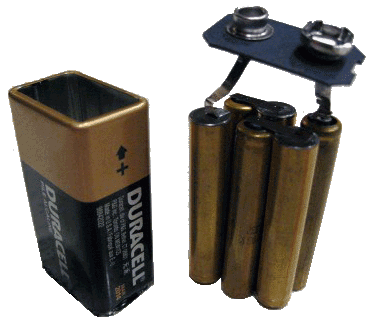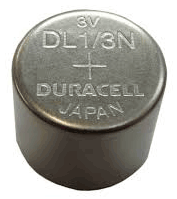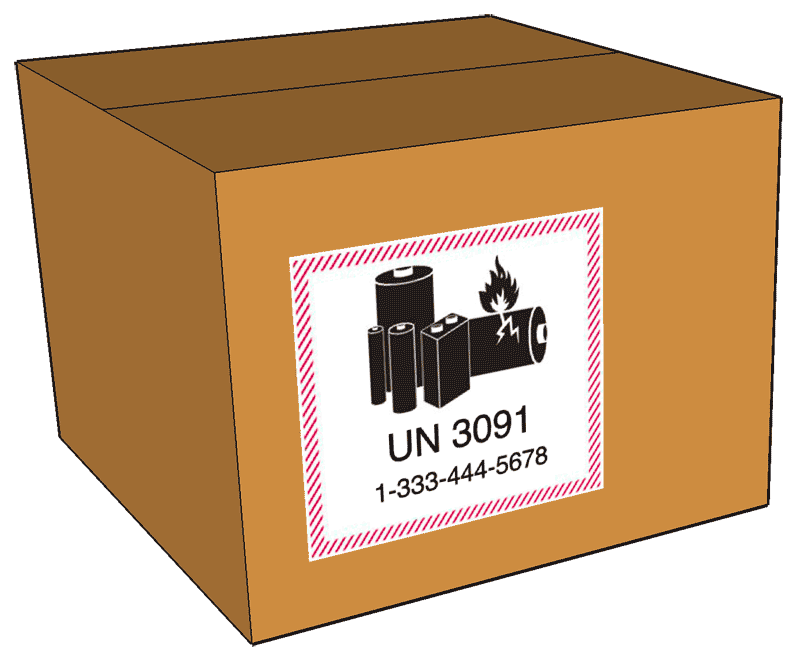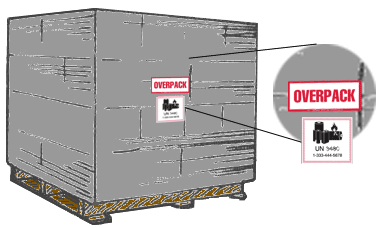
COMMODITY: Lithium metal batteries packed with equipment; Not exceeding 1 gram (g) lithium metal content per cell, or 2g lithium metal content per battery; Three sets maximum per package (WRAP tool(s) may be packed with a total of six 1/3N batteries); Unlimited packages per consignment.
The WRAP tool is powered by a set of two non-rechargeable CR11108 lithium metal cells, net weight/quantity of 3g, having 0.6g lithium each, and which produce 160milliAmpere at 3 volts. (C = manganese dioxide form of lithium which produces 3 volts, R = round, 11 = 11.6mm diameter, 108 = 10.8mm height). Per IATA guidance, these are considered to be “button cells” because the height is less than the diameter. Alternative names include ‘CR1/3N’ and ‘2L76’; the CR11108 battery is 1/3 of the N battery height, and it is double the height of L76 battery. Battery means a collection of cells, but in layman’s terms “battery” is also commonly used to refer to a single cell.
MODE OF TRANSPORTATION: International Air
OVERVIEW
This transport data sheet is for shipments of small lithium metal batteries with specific exceptions, when packed with the equipment with which they will be used. Batteries packed with equipment are much less regulated than batteries shipped alone, but are slightly more regulated than batteries contained in (installed in) equipment.
Small lithium batteries packed with equipment within limitations are not subject to the dangerous goods regulations for air except as dictated by the extensive requirements contained in Packing Instruction 969, in the General Requirements and Section II.
This transport data sheet does not cover various special provisions for prototype batteries, special approvals, defective or waste batteries, combinations of lithium ion and metal batteries or batteries in vehicles.
This transport data sheet may be used for combinations of lithium batteries both contained in and packed with equipment. In this case the cells inside the equipment are considered packed with the equipment and just happen to be inside it, and count towards the maximum of 3 sets per package.
The batteries must not be defective and must be protected to prevent short circuits.
| PROPER SHIPPING NAME: | Lithium metal batteries packed with equipment | LABEL: | No |
| IDENTIFICATION NUMBER: | UN 3091 | PLACARD: | No |
| HAZARD CLASS/DIVISION: | 9 | EMERG. INFO TRANSMITTAL: | No |
| PACKING GROUP: | None | TRAINING: | Special |
| DOCUMENT: | Special | PACKAGING: | Special |
| MARKING: | Yes |
HAZMAT TABLE

____________________________________________________________
Classification
This transport data sheet uses the small lithium metal cells and batteries exceptions in IATA Packing Instruction 969 Section II. Excepted lithium metal cells may not exceed 1 gram (g) lithium metal content each, and lithium metal batteries may not exceed 2g lithium metal content each.


A battery is a collection of cells. Cells are often circular or cylindrical. A single cell “battery” (DL 1/3N above) is considered a cell. A “button cell” means the height of the cell is less than the diameter (per IATA guidance).
Lithium cells and batteries must meet requirements of the UN Manual of Tests and Criteria. The manufacture must record the test results and maintain them (indefinitely).
Citation: IATA DGR, PI 969 Section II
PACKAGING INFORMATION
Packaging must meet the general requirements of IATA DGR PI 969:
- Cells or batteries must be packed as follows:
- protected against short circuits;
- protected against unintentional activation of the equipment;
- completely enclosed in an inner packaging (e.g. a bag or blister pack cell) to prevent things from contacting the terminals (e.g. other batteries, equipment)
- inner packages then placed with equipment, which is all secured against damage and movement within an outer package; and
- the outer packaging must be quality, strong, and rigid and not defective or damaged.
- Specification packaging testing does not apply. However, the equipment and/or packaging must offer equivalent protection as a rigid package, and must be capable of passing a 1.2 meter drop test without damage, shifting of contents allowing battery-to-battery contact, or release from the package.
- No more than 3 sets of cells or batteries may be packed with their equipment. A set is the number of cells or batteries used to power the equipment. In this case there can be one cell in each tool and 2 spare cells per tool.
- A package may contain any number of tools, and up to a maximum of 5 kg net of lithium metal cells as long as there are not more than 3 cells per tool.
- There is no gross weight limit per package.
- There is no limit of the number of packages in a shipment.
Citation: IATA DGR, PI 969
SHIPPING PAPER REQUIREMENTS
A dangerous goods declaration is not required.
The air waybill must include the words “Lithium metal batteries in compliance with Section II of PI 969”, in the “Nature and Quantity of Goods”box, when an air way bill is used.

Citation: IATA DGR PI 969 Section II, Additional Requirements
CARTON MARKING

Per UPS Variation 5X-07, for shipments tendered to UPS without an IATA Air Waybill, the package must have this “P.I. 969-II” marked next to the lithium battery handling label, or on the UPS address label, or on a document accessible from the outside of the packaging (e.g. in a packing slip envelope).
OVERPACKS
Overpack packages containing lithium metal cells or lithium metal batteries packed with equipment and displaying the lithium metal battery mark must also display that mark.



Training
Each person who prepares a package for transport containing lithium cells or batteries, including cells or batteries packed with, or contained in, equipment in accordance with the conditions and limitations of this transport data sheet, must receive adequate instruction on these conditions and limitations, commensurate with their responsibilities.